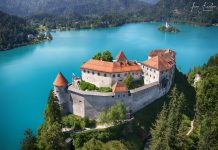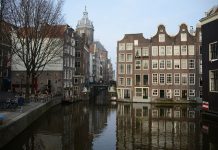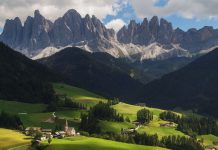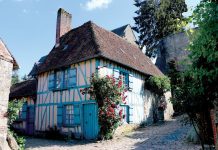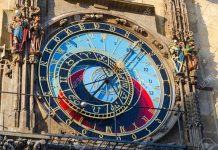The National Museum of Carthage located on the Byrsa Hill, contains a most interesting Punic and Roman collection from marble sarcophagi to everyday household items as well as a model of Punic Carthage and the Roman Capitol and Tophet built on its ruins. Here again we find the curious Punic colored glass paste masks with their large protruding eyes and the clay masks designed to ward off the evil spirits as well as a lovely collection of jewelry.
The main ruins of Punic Carthage are here as well as in the Carthage-Salambo area. It is believed that over 400,000 persons lived in this vast city surrounded by walls 13 meters high. Today the view from the Byrsa hill overlooks the modern Carthage ,the Punic Harbour, Tunis, and in the distance the Bou Kournine mountain. Amid this beauty it is hard to imagine the fall and destruction of Carthage in 146 BC.
“.. for 17 days the city was in flames that devoured all, the living and the dead and all that grew and once flourished…the land was cursed and strewn with salt and forbidden to all mankind henceforth. ” One hundred years later the Romans returned and upon the ruins erected Roman Carthage with magnificent public buildings second only to Rome itself in importance and grandeur.
To the South of the Museum lies the Punic Quarter, an ancient burial site, converted to an area of workshops and houses. Excavations have shown the houses to be in general two or three stories with indoor wells and cisterns. Unfortunately even the ruins of the temple dedicated to Eshmum were completely obliterated during the Roman reconstruction.
To the east along the Rue Hannibal lies the Kothon- the Punic harbor -which sheltered the mightiest fleet of the ancient Mediterranean. Composed of a commercial harbour which gave direct access to the sea through a narrow channel and a military harbour surrounded by a high wall.
The entrance could be sealed by an enormous chain . Recent excavations on the small island in the middle of the harbor from which the naval commander of the fleet directed and oversaw the operations, have revealed an incredible system of dry docking and slips. A fascinating model of the boathouse, shrine and docks is now completed. As excavations continue, the mastery with which Carthage, the “Queen of the Seas” ruled the Mediterranean will be further confirmed.
Further down the Rue Hannibal in a lovely shady garden is the Tophet dedicated to Baal Haamon. The aura of peace is shattered by the view of row upon row, layer upon layer of funeral steles and urns containing the ashes of sacrificed children. The steles bear inscriptions in Punic, magical symbols and stylized representations of gods. A model of the Tophet exists at the National Museum of Carthage. Human sacrifice was practiced in the early days of Carthage and continued into the 3rd century, although some experts believe that a sheep or veal was often substituted to a human child. However during times of war, plague or drought, the practice was revived . The sanctuary itself covers about 2 hectares and is riddled with shafts and layer upon layer of steles giving credence to the number of over 7000 sacrifices. A great controversy still rages over this practice as some scholars believe the stories of child sacrifice to be an slanderous invention of the Roman writers and much exaggerated.
Leave this gloomy site and explore the imposing ruins of the Baths of Antonin ,known to be the largest in the Roman world, beside that of Rome itself. Set against the blue background of the Mediterranean the last of the eight colossal columns that supported the central room, gives us just a glimpse of the grandeur of these baths that covered almost 2 hectares. The nearby Archaeological Park demonstrates the Roman love of order with its rectangular grid of streets serving the residential quarter. This site is of a particular interest showing the successive layers of inhabitants with Punic graves, a Christian church, and a 7th century burial chapel , as well as rounded limestone projectiles from Carthaginian armories.
The Roman Theater dating from the 2nd century AD seated 5000 spectators and is still in use for the Cartage Festival held in July through August. On the hillside behind the theater, lies a Park containing the villas of wealthy Romans, one of which the Villa Des Voilieres has been restored with its elegant peristyle and fine mosaics.
A stroll through the area will reveal the extent of Carthage under the Romans. At La Malaga about 1 km northwest of Byrsa and near the road to Tunis, 24 enormous cisterns were built to hold the water brought by an aqueduct from Zaghouan 132 km away. Only 15 or so remain, yet their impressive size is again a testimony of the Roman genius for construction. Nearby the ruins of the Amphitheater – built in the 2nd century for over 50,000 spectators, it was the scene for the martyrdom of Christians in the 3rd century. Although only the underground rooms and a part of the foundations remain, they bear witness of its grandeur and magnitude.

